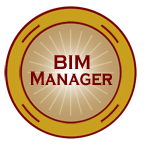There are a lot of firms that have not embraced BIM and may not even be investigating its use.
Before you start thinking that they are going to be left in the dust and will be out of business in 5 years or less, let’s ask the question first.
Is BIM push back just the plight of smaller firms? Are all big firms going to BIM? Are there any big AEC firms that have not started moving to BIM and have chosen to stay on plain CAD or 2.5 D CAD?
Many firms have production capabilities built on tools other than BIM. They are productive, accurate, design focused and getting the job done. They think “Why move to BIM?”
Their thinking may be:
1. We are happy where they are – We are productive. My team is trained. We are making money and we are fine without BIM
2. We are forced to stay where they are by economic reality – we cannot afford BIM. It costs too much. We have software now that is paid for. The cost of upgrading is making us not even think about it.
3. We are forced to stay where they are by business reality – we have to compete on speed. Transitioning to BIM will slow us down.
4. Training cost will kill us – money is the issue as well as time. We cannot afford to have someone take 3-4 days off production to get trained.
5. None of my competition is moving in that direction – others are using CAD and getting work. They propose and win and can do it cheaper in CAD.
6. I cannot convince my clients to make the jump – they don’t care about BIM or anything it brings to the table. They just want their plan drawings done. They don’t want any fancy 3D or animations or renderings or anything else. They want to pay as little as possible and get it done fast.
Are there other reasons for not moving to BIM? Do they relate to firm size? Clients or markets?
Let me know by leaving a comment… why are you not moving to BIM?


Our 2010 BIM report answers many of these questions in quite some detail and has been acquired by every major BIM software company competing in the AEC market place, including Autodesk. In regards to not adoptiong BIM, here are a few of the key findings we uncovered in our survey of over 400 architecture firms in the US and abroad:
1. Many firms, regardless of size, have not adopted BIM because they do not have anybody to pass on the data (information) to. This is particularly relevant to the contractors that many of these architects typically work with. If the contractor will not extract the rich data in a BIM model and use it, why adopt a BIM workflow?
2. Without clients and contractors both interested in and willing to pay for, the rich data capable of being stored in a BIM model, architects have no business incentive to adopt BIM other than they feel working in 3D from the beginning helps them design better buildings. This relates strongly to one of our primary findings that the number one reason architects are primarily interested in BIM is because they believe it helps them design better. In light of the above, many firms in this scenario feel working with 3D tools like SketchUp give them the benefits of BIM without the expectations and requirements of data input/extraction and disengaging from streamlined 2D CAD workflows which they find currently very efficient.
3. Cost, training and difficulty. Many firms said they were not yet interested in a BIM workflow because of perception of higher cost to run BIM (3D BIM programs do work better with higher performing systems), cost of training and problems with some personnel struggling to work in 3D.
I would like to make a special note about this last issue. Many firms feel that while junior staff are tech savvy and can learn and pickup new software easily, they find that senior level (baby boomer and older) staff often struggle with new software systems. These senior staff people are incredibly valuable to firms for their experience and expertise they carry with them, regardless of their position within a firm. The challenge that many firm owners see is how to get this experience and expertise into the hands of younger staff, while simultaneously helping older staff fit into changing workflows.
To learn more and obtain the report you can go here:
http://architosh.com/2010/03/architosh-announces-2010-bim-survey-report/
http://www.lulu.com/product/paperback/architosh-2010-bim-isv-report/10907500
I’m waiting for a Civil product that takes advantage of the BIM modeling the industry has been given over the past few years from Autodesk. How can Civil 3D be called a BIM product if we don’t have curbs, retaining walls, gutters, pavement, etc.
Christopher,
I have heard Civil3D be called “BIM” and was wondering about the full depth of hanging that moniker on the product. We know that BIM is a process not a product. Some expand the BIM term to include many things. Some even extend it to vanilla CAD. CAD does contain “information”, but may not fit the category of a “model”.
One reason that was not mentioned, is the classic human fault. If it ain’t broke, then don’t fix it. How many different things are we doing because that is how we have always done it? People are forgetting that the purpose of BIM, and the value of it is exactly that the old workflow is broken. BIM is attempting to answer the demands for better and faster design. Look at the microchip. It is getting put into most everything, toys, phones, computers, cars, planes, etc. Why is this? Because it allows those things to be “Smarter”. With BIM we will be heading in that direction, once a standard is developed, and every manufacturer uses this standard, our buildings will be better in design.
Reports – the information about your design that you can get updated to the minute, makes BIM worth it. If you are an Architect, and you have zoning requirements, your building can’t exceed such and such square feet without adding on the additional costs of such and such fire protection. In a CAD environment, you are more likely to stray past these zoning requirements, and it will take time and money to verify that you don’t. In BIM, this information is available instantly, and updated automatically. You can instantly calculate your watts per square foot, or you BTU per cubic foot. All kinds of information can be represented and used to enhance your design, and all of these can be put into a report that on an instant can tell you if you exceed any setpoints that you have for your design basis.
Finally, I propose that we wake up and realize that the construction industry is jumping on board with BIM, but struggling because of the standard disconnect; when a building is designed, it is just a method of proving that the building CAN be built, not necessarily HOW to build it. Contractors usually pour over the final documents, make their own models, and run their own proven algorithms to reduce costs while providing the same design intent. What I think we will see happening is a combination, or collective workforce, where contractors work with architects and engineers to create a design that is not only sound, but efficient. Clients are starting to see the value, especially in places where they do a lot of remodels through the lifetime of a building, such as healthcare. In this manner, when a CT room is modified to handle its new equipment, the team hired to perform this modification will take the BIM Model, make new documents to prove their design, and reports for the material takeoffs, thus proving to the client that they performed cheaply, and precisely, and thus satisfying the client’s desire to minimize risk while maximizing ROI.
So remember, those that use CAD are sticking with the way it has always been done, where as those who are shifting to BIM are wise to the fact that there is a better faster method than sticking to how we used to do it when we hand drew our plans and details.